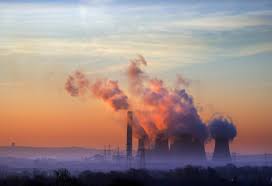
Monday saw the official launch of the first global registry of oil and gas reserves, production, and emissions, according to Carbon Tracker and Global Energy Monitor, which includes information on more than 50,000 fields.
In order to help investors better understand which assets may be at risk of becoming uneconomic or "stranded" during the low-energy transition, the database makes previously disparate or difficult-to-access data publicly available.
Additionally, it might support activists' efforts to influence governments or producers to reduce the production of fossil fuels.
"It is an enormous help to now have all this information, cross-referenced and searchable at our fingertips. Not least to help us in targeting and refining our thematic engagement and stewardship," said Eric Christian Pedersen, Head of Responsible Investments at Nordea Asset Management.
According to the non-governmental organizations that created it, the Global Registry of Fossil Fuels contains data for fields in 89 countries, accounting for 75% of global production.
Global Energy Monitor (GEM) reported that the registry compiled information from government agencies, state-owned and private businesses, news and media reports, NGOs, and local contacts who could provide first-hand knowledge of a project.
"With the Registry, it will be much easier to include expected future emissions into the analysis - and thus to identify and prioritise the companies with the greatest risk of harbouring assets likely to become stranded," Pedersen said.
The registry has given a price to this, even though there is little doubt that a large portion of the world's oil and gas reserves will need to remain underground to prevent a dramatic worsening of the climate.
"Producing and combusting the world's reserves would yield over 3.5 trillion tons of greenhouse gas emissions, over seven times the remaining carbon budget for 1.5C and more than all emissions produced since the industrial revolution," they said.
Calculating the life-cycle emissions of a unit of oil, gas, or coal is not simple and frequently relies on calculations rather than measurements that can vary greatly.
If the powerful but transient greenhouse gas methane is converted into CO2 equivalent data over a 20-year period as opposed to a 100-year period is one factor, for instance.
"It may sound dry and technical but it adds about another five gigatons of CO2e (carbon dioxide equivalent) emissions a year," lead modeller Johnny West of Koinon Consulting, which advised Carbon Tracker, said.
Such information, according to Deborah Gordon of the Rocky Mountain Institute's climate intelligence group, is essential so that business and the government can focus on the dirtiest fields first.
"There is far too little transparency ... Reservoir and activity data are difficult, if not impossible, to ascertain," Gordon added.
(Source:www.latestly.com)
In order to help investors better understand which assets may be at risk of becoming uneconomic or "stranded" during the low-energy transition, the database makes previously disparate or difficult-to-access data publicly available.
Additionally, it might support activists' efforts to influence governments or producers to reduce the production of fossil fuels.
"It is an enormous help to now have all this information, cross-referenced and searchable at our fingertips. Not least to help us in targeting and refining our thematic engagement and stewardship," said Eric Christian Pedersen, Head of Responsible Investments at Nordea Asset Management.
According to the non-governmental organizations that created it, the Global Registry of Fossil Fuels contains data for fields in 89 countries, accounting for 75% of global production.
Global Energy Monitor (GEM) reported that the registry compiled information from government agencies, state-owned and private businesses, news and media reports, NGOs, and local contacts who could provide first-hand knowledge of a project.
"With the Registry, it will be much easier to include expected future emissions into the analysis - and thus to identify and prioritise the companies with the greatest risk of harbouring assets likely to become stranded," Pedersen said.
The registry has given a price to this, even though there is little doubt that a large portion of the world's oil and gas reserves will need to remain underground to prevent a dramatic worsening of the climate.
"Producing and combusting the world's reserves would yield over 3.5 trillion tons of greenhouse gas emissions, over seven times the remaining carbon budget for 1.5C and more than all emissions produced since the industrial revolution," they said.
Calculating the life-cycle emissions of a unit of oil, gas, or coal is not simple and frequently relies on calculations rather than measurements that can vary greatly.
If the powerful but transient greenhouse gas methane is converted into CO2 equivalent data over a 20-year period as opposed to a 100-year period is one factor, for instance.
"It may sound dry and technical but it adds about another five gigatons of CO2e (carbon dioxide equivalent) emissions a year," lead modeller Johnny West of Koinon Consulting, which advised Carbon Tracker, said.
Such information, according to Deborah Gordon of the Rocky Mountain Institute's climate intelligence group, is essential so that business and the government can focus on the dirtiest fields first.
"There is far too little transparency ... Reservoir and activity data are difficult, if not impossible, to ascertain," Gordon added.
(Source:www.latestly.com)





